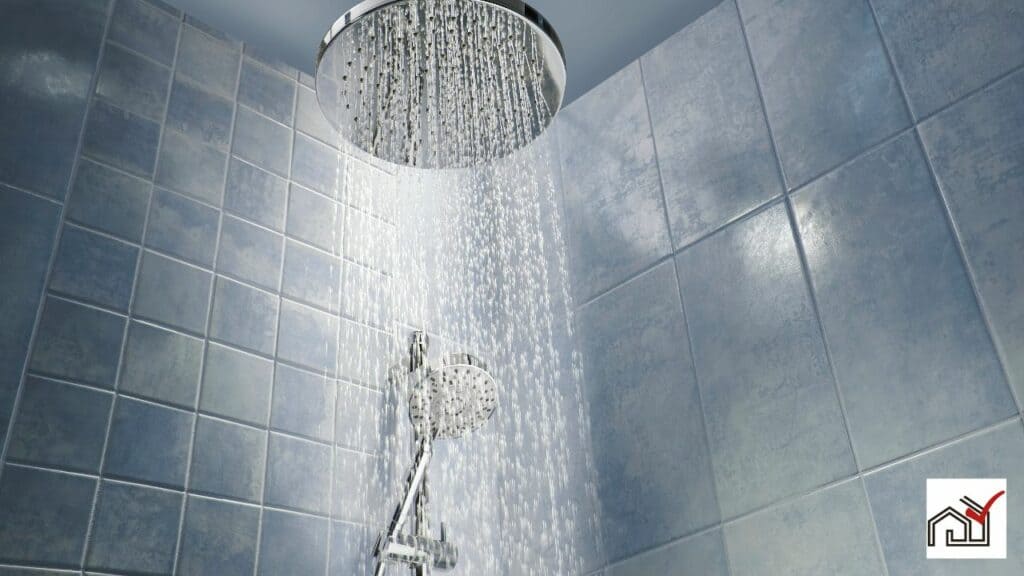Steam showers need proper ventilation to prevent high humidity, which can lead to mold, mildew, and structural damage. Ventilation systems must match the size and use of the steam shower to keep the air quality healthy and preserve the bathroom's condition.
Planning and following ventilation guidelines are important for the steam shower's efficient and safe operation.
Understanding Steam Shower Ventilation
Proper ventilation in a steam shower is essential for maintaining air quality and controlling moisture. Exhaust fans are key for removing the warm, moist air generated during use. Without good ventilation, there is a risk of mold, water damage, and poor air quality.
The exhaust fan should be positioned outside the shower enclosure to effectively remove humidity. The fan's ability to circulate air, measured in cubic feet per minute (CFM), should match the steam shower's size for efficiency. A fan that's too small won't remove all the humidity, while one that's too large can cool the shower too quickly.
Features like louvers and transoms can enhance ventilation by allowing passive airflow, supporting the active exhaust system. A combination of these ventilation methods is important for a comfortable and safe steam shower, helping to prevent issues related to high humidity.
Implementing the right ventilation, including a properly sized exhaust fan, is critical for the steam shower's durability and user experience.
Importance of Moisture Control
In steam shower design, moisture control is essential for maintaining the structure and a healthy bathroom environment. It's necessary to prevent material degradation and the growth of mold and mildew. A good ventilation system is vital for removing moisture effectively.
Proper ventilation prevents moisture buildup on vulnerable surfaces like wood and fabric, thereby preserving bathroom fixtures and reducing the need for costly repairs. It also improves air quality by eliminating odors and airborne contaminants.
Poor ventilation can lead to mold, which may cause respiratory issues, skin irritation, and eye problems. A strong ventilation strategy is important for user health and bathroom longevity.
During bathroom remodels, investing in an upgraded ventilation system is wise. It promotes adequate airflow and moisture management, which helps prevent mold and maintains the bathroom's condition over time.
Structural Preservation Techniques
Ventilation is crucial for maintaining the structural integrity of homes with steam showers by reducing moisture damage. When installing steam showers, it is essential to use structural preservation methods to avoid damage to building materials and to prolong their lifespan. Ensuring a proper environment for steam showers is necessary to protect the home from high humidity.
A correctly sized steam generator is important for keeping steam contained within the shower and preventing moisture in other areas. Insulation is also key; sealing windows and doors in the steam shower area helps maintain steam quality and reduces heat loss.
Using double-paned windows prevents steam from escaping outside and minimizes heat transfer, which saves energy and protects exterior structural elements from temperature and humidity changes.
Incorporating louvers in the steam room design improves ventilation and controls airflow, which helps prevent too much condensation. This keeps the bathroom dry and preserves the condition of fixtures and finishes.
After using the steam shower, running cold water helps to condense and clear remaining steam, lowering humidity in the bathroom and further protecting the structure from moisture damage.
Mold and Mildew Prevention
Ventilation is essential in steam showers to prevent mold and mildew. These fungi grow in warm and wet areas, and without good airflow, steam showers can support their growth. Mold and mildew can harm health, damage the structure, and reduce the visual appeal of your bathroom.
To prevent mold and mildew, steam showers need effective ventilation to remove excess moisture. This stops water from accumulating on surfaces which can lead to fungus growth. Proper ventilation systems exchange moist air with dry air from outside, creating an environment less favorable for fungi.
Additionally, ventilation helps protect bathroom surfaces from moisture damage. Without it, moisture can cause decay in walls, ceilings, and fixtures, leading to expensive repairs. It also helps to prevent wooden parts of the shower, like benches, from warping due to moisture.
Ensuring Indoor Air Quality
A good ventilation system is crucial for maintaining indoor air quality in steam showers. Without proper ventilation, the warm and moist conditions can lead to mold and bacteria growth, which may affect the health of the residents by causing respiratory issues. Effective ventilation is necessary to provide a healthy steam shower environment.
Besides preventing mold and mildew, proper ventilation helps prevent moisture damage to wood, fabrics, and other materials in the bathroom, which can save on maintenance costs and prolong the lifespan of the bathroom.
Additionally, it is important for a ventilation system to remove odors and pollutants, which are more noticeable and trapped by high humidity levels in a steam shower. A system designed to handle high moisture can effectively remove these unwanted elements.
When choosing a ventilation system for a steam shower, it is important to consider energy efficiency, humidity control, and the size and layout of the bathroom. In older bathrooms with steam showers, upgrading the ventilation system is important to manage the moisture effectively and maintain the bathroom's condition and functionality.
Steam Shower Ventilation Best Practices
Steam showers require proper ventilation to maintain air quality and prevent damage. It is important to choose a steam generator that matches the shower's size and materials to manage moisture. The shower should be well-sealed, with double-paned windows if outside-facing, to keep steam in and reduce the need for heavy ventilation.
Installing an exhaust fan outside the steam shower is crucial for removing moist air and preventing mold. Adding louvers and transoms can improve air flow and reduce condensation. Using cold water ventilation after use helps dry out the space efficiently.
These measures ensure a lasting and clean steam shower environment.





